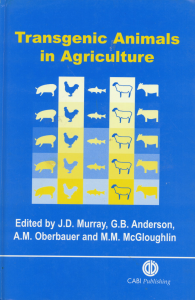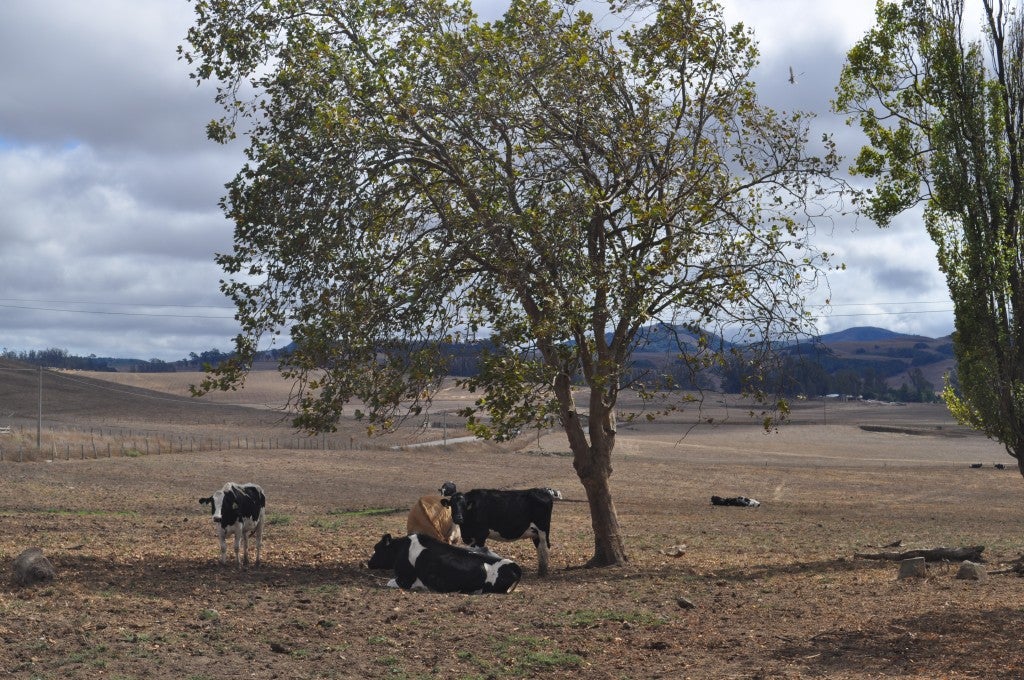
Cattle grazing in Northern California
Over the past two weeks I have been speaking to livestock producers at locations from Bakersfield in Southern California to Montague on the Oregon border. I was a speaker at a number of “Winter Animal Health” meetings which are organized annually by the University of California Cooperative Extension.
As a geneticist, I was speaking about genetics and how to make better bull selection decisions. Not surprisingly (to all but a geneticist) genetics was only one of several topics covered, and many of the subjects were unrelated to my area of expertise.
Being located on the Davis campus, I relish the opportunity that extension meetings afford me to get out among actual producers and listen to their experiences, concerns and problems. And what really struck me about this series of meetings is that everything is trying to eat our lunch!
What I mean by that is that pests from all kingdoms – microbial, plant and animal – are competing for the resources used by the plants and animals that we eat, or are beating us to the punch by actually eating those same things for themselves!
The traditional definition of a pest is an epidemic disease associated with high mortality; specifically the plague or “pestilence”. It is also defined as something resembling a pest in destructiveness; especially a plant or animal detrimental to humans or human concerns (as in agriculture or livestock production).
The pests that were covered by this series of meetings included the traditional viruses and bacteria that result in animal diseases, weeds that compete with pasture and crops for scarce water and nutrients, a wide-ranging list of insects like ticks and mosquitos that carry disease, ground squirrels that eat vegetation and construct leg-breaking holes and destructive mounds in the middle of fields, wild deer that graze crops, pastures and even watermelons, and wild horses that compete for precious resources on the drought-stricken range.
Listening to the plethora of animal and plant pests discussed at these meetings, it is impressive that the producers are able to preserve any of their product to market for human consumers.
Control measures to address pests were as varied as the pests, and indeed the producers, themselves. Depending upon the production system requirements of their target market, producers are using a variety of chemical, physical, and temporal pest management approaches.
One thing is constant – all production system face pests. Some pests are common to all – like threat of animal disease and weeds – whereas others are crop and/or species specific.

Google image search for “ideal farm”
Often images of agriculture show a utopian red barn in a green field, and rarely is there even a single pest present in the image. The animals are all healthy, the fields are all weed-free, and there is not a single ground squirrel, tick or other scourge in sight.
Skillful management can help approach that ideal through the judicious use of preventative measures like vaccines to forestall disease, and ploughing or tilling to manage undesired weeds. But in the open outdoor environment of agriculture it is hard to avoid airborne weed seeds, disease-causing microbes and insects, and grazing competition from wild herbivores. And then there are the predators that prey on the livestock themselves.
Failure to correctly or effectively manage pests can result in complete crop failure (i.e. no food), or catastrophic health outcomes for livestock. It has been estimated that without pesticides 70% of the world food crop would be lost and even with pesticide use, 42% is destroyed by insects and fungal damage. Dispensing with pesticides would require at least 90% more cropland to maintain present yields.
The producers present at these meetings spanned the range from backyard hobby farmers, to part-time ranchers with day jobs in the city, to fulltime commercial family farmers and ranchers. They represented a range of farming systems, including some that prohibited the use of certain pest management methods such as certain herbicides, antibiotics, or selected insecticides.
What was refreshing to me was that the different control methods and integrated pest management approaches were presented objectively, and the producers listened with respectful interest, rather than judgment, as to how their neighbors were managing their pest problems.
There were no black and white choices or magic silver bullets provided by the various speakers. Different approaches were presented along with their nuanced pros and cons; benefits and tradeoffs were discussed fairly and without prejudice in comparison among the different choices that are available.
In my 20 year experience working with farmers and ranchers, this set of meetings was not atypical. Extension has long presented objective information on solutions to agricultural problems through informal educational meetings.
I just wish more urban people could hear these discussions and see the level of technical competence, professionalism and thought that producers put into their production and pest management decisions, and appreciate the fact that at the end of the day some food remains for their dinner and dessert plates. Including this impressive spread of homemade pies on offer at the conclusion of the Montague cattle health meeting, aka “Pie Night” for obvious reasons. One of the lesser known and most enjoyable perks of an extension meeting in Northern California ! With thanks to Siskiyou County Cattlemen and Cattlewomen!

Home made pies at the 2016 Montague Cattle Health Meeting
 The first transgenic animal research conference (TARC I) was held in 1997 and the proceedings were summarized in a book optimistically titled, “Transgenic Animals in Agriculture”. The book contains some interesting quotes, including one attributed to Dr. Robert Wall, USDA-ARS in Beltsville, Maryland, who quipped, “the field of transgenic large animals is one of the few fields where there are more review papers than data papers.”
The first transgenic animal research conference (TARC I) was held in 1997 and the proceedings were summarized in a book optimistically titled, “Transgenic Animals in Agriculture”. The book contains some interesting quotes, including one attributed to Dr. Robert Wall, USDA-ARS in Beltsville, Maryland, who quipped, “the field of transgenic large animals is one of the few fields where there are more review papers than data papers.”

 Should I start a blog? I have been thinking about this question for a while. I certainly have plenty of other things to keep me occupied – students, grants, research, presentations to prepare, reports to write, oh and my own kids and husband (Happy Valentine’s day BTW) and family duties.
Should I start a blog? I have been thinking about this question for a while. I certainly have plenty of other things to keep me occupied – students, grants, research, presentations to prepare, reports to write, oh and my own kids and husband (Happy Valentine’s day BTW) and family duties.